MAE 3303 Aerodynamics of Compressible Flow
Homework 2 Solution
Answers to Study Questions
- Why does variable density complicate fluid flow analysis?
ans: Because it allows an exchange between kinetic and thermal energy, which
in turn implies that an energy conservation law (1st law of thermodynamics) must
be solved along with the mass and momentum equations.
- Why does the familiar Bernoulli equation not hold in a compressible
flow?
ans: Because it was derived assuming constant density.
- What is the advantage of the control volume approach over the
differential equation approach for flow analysis?
ans: It is not necessary to know the details of the flow inside the control volume in order to
compute useful information like thrust and efficiency of a jet engine.
- What are the limitations of the control volume approach?
ans: It does not predict the details of the flow within the control volume.
- What is the physical interpretation of the volume integral in
the expression for the time rate of change of a fluid property
contained in a fixed volume?
ans: Accumulation of the property due to flow unsteadiness.
- What is the physical interpretation of the surface integral in
the expression for the time rate of change of a fluid property
contained in a fixed volume?
ans: Net flux of the fluid property across the surface of the control volume.
- What is the rate of work done by a force [f\vec] on a fluid
of density r moving with a velocity [u\vec] and passing
through an area A? (Assume that f is force per unit mass).
ans: r[u\vec]·[f\vec]A.
- List two sources for transferring heat to a control volume.
ans: Volumetric heating (i.e. radiation), surface heating (i.e. heat conduction).
- What is shaft work?
ans: Work input or extracted from the system via machinery moving within the volume.
- How is shaft work differentiated from pressure work?
ans: It is the component of the pressure work that occurs on the surface of the moving machinery.
- What is the stagnation reference condition. What type of process is
assumed to hold in bringing the fluid to rest?
ans: Hypothetical reference state where the flow is brought to rest. The
process must be adiabatic for a useful temperature or sound speed
reference. It must be isentropic for all other reference values.
- Is there any difference between the stagnation temperature and the
total temperature?
ans: No. They are synonymous.
- According to the energy equation for frictionless adiabatic steady flow
free from body forces, what quantity is constant along a streamline?
ans: The total enthalpy, h0 = h + 1/2U2.
- Under what conditions will the the total enthalpy be constant
everywhere in the fluid?
ans: For frictionless adiabatic steady flow, no body forces with uniform conditions
far upstream.
- What simplification in flow analysis is achieved in the case where
the total enthalpy is a constant everywhere?
ans: The energy equation can be replaced with h0 = h + 1/2U2, where
h0 is a universal constant.
- If the flow is isentropic between two points in the fluid, what
relationship must exist between the stagnation pressures measured
at these two points. Is the same thing true of all the stagnation
reference variables? Explain your answer.
ans: The stagnation pressures must be the same. This is also true of
the other stagnation variables.
- What is the sonic reference condition. What type of process is
assumed to hold in bringing the fluid to M=1?
ans: Hypothetical reference state where the flow is either accelerated
or decelerated as the case may be in order to reach M=1. The process
must be adiabatic for a useful temperature or sound speed reference.
It must be isentropic for all other reference values.
- Why do shock waves sometimes form in supersonic flow?
ans: If the flow is supersonic, fluid particles are traveling faster than
sound waves. Thus it is not possible for the flow to know an obstacle
is coming and the only way it can adjust is to go through a shock wave
where the downstream component of the velocity normal to the shock is
subsonic.
- What is a typical thickness for a shock wave? How does this distance
compare with the mean for air at standard conditions?
ans: 10-5 cm. This distance is comparable to the mean free path.
- What is the difference between a normal and an oblique shock wave?
ans: The flow passes through a normal shock at a right angle. It passes through
an oblique shock at an angle.
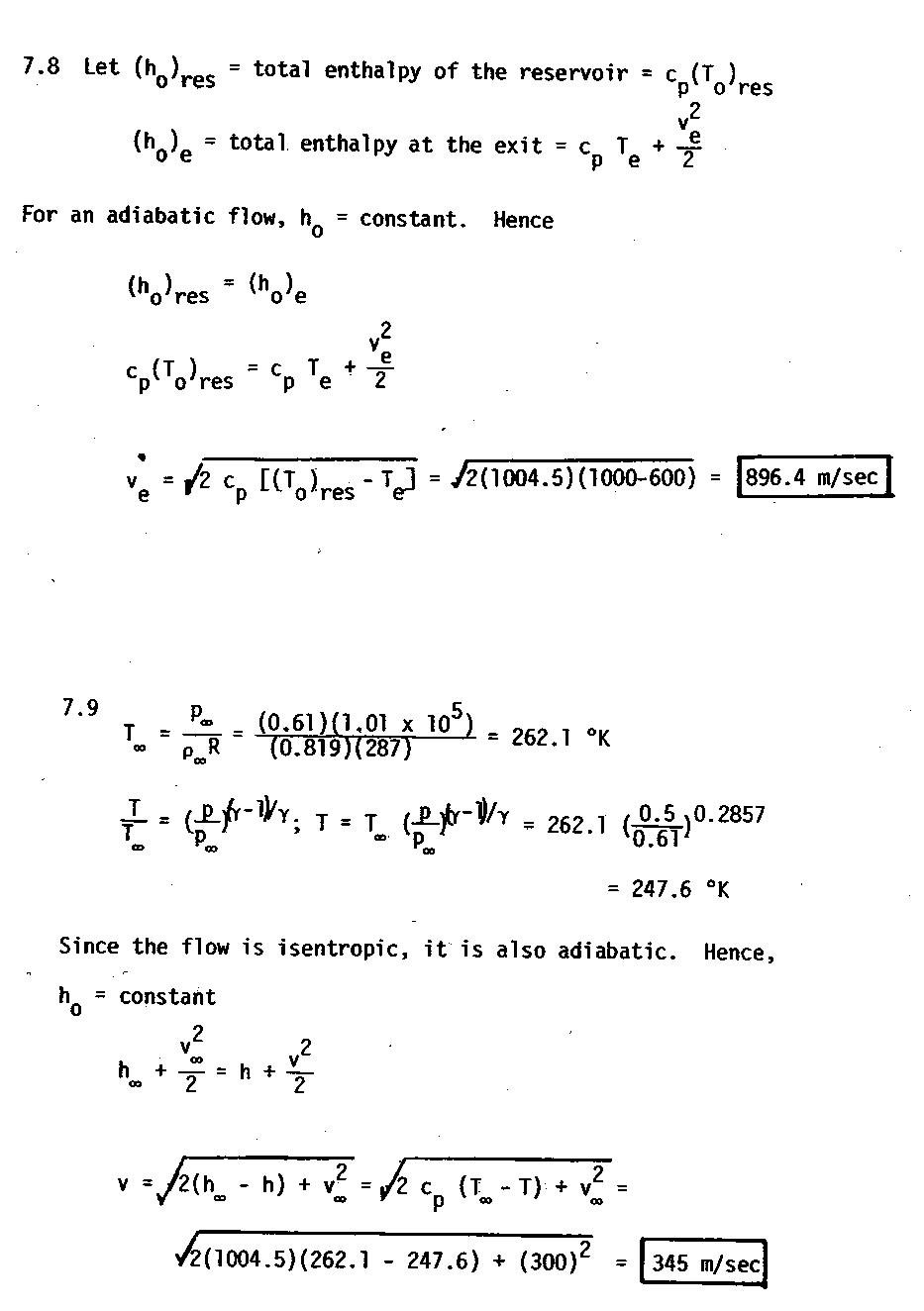
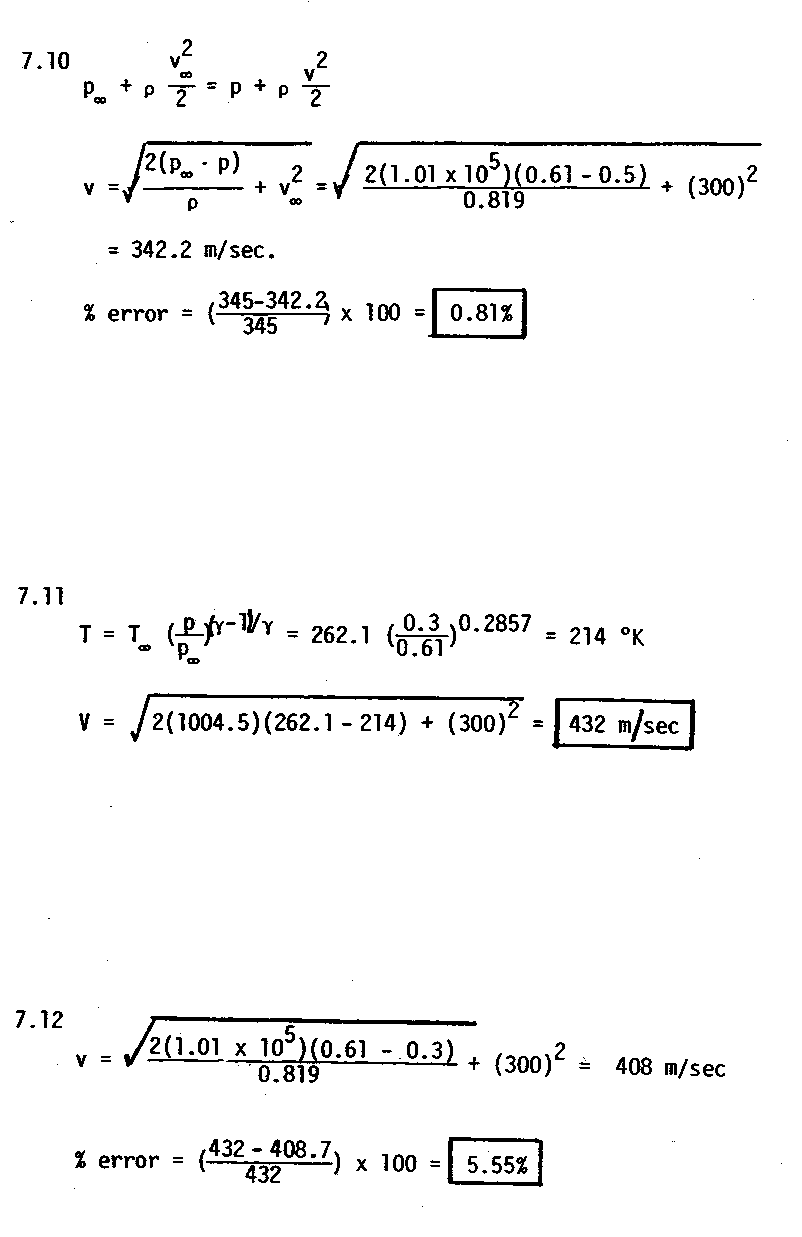
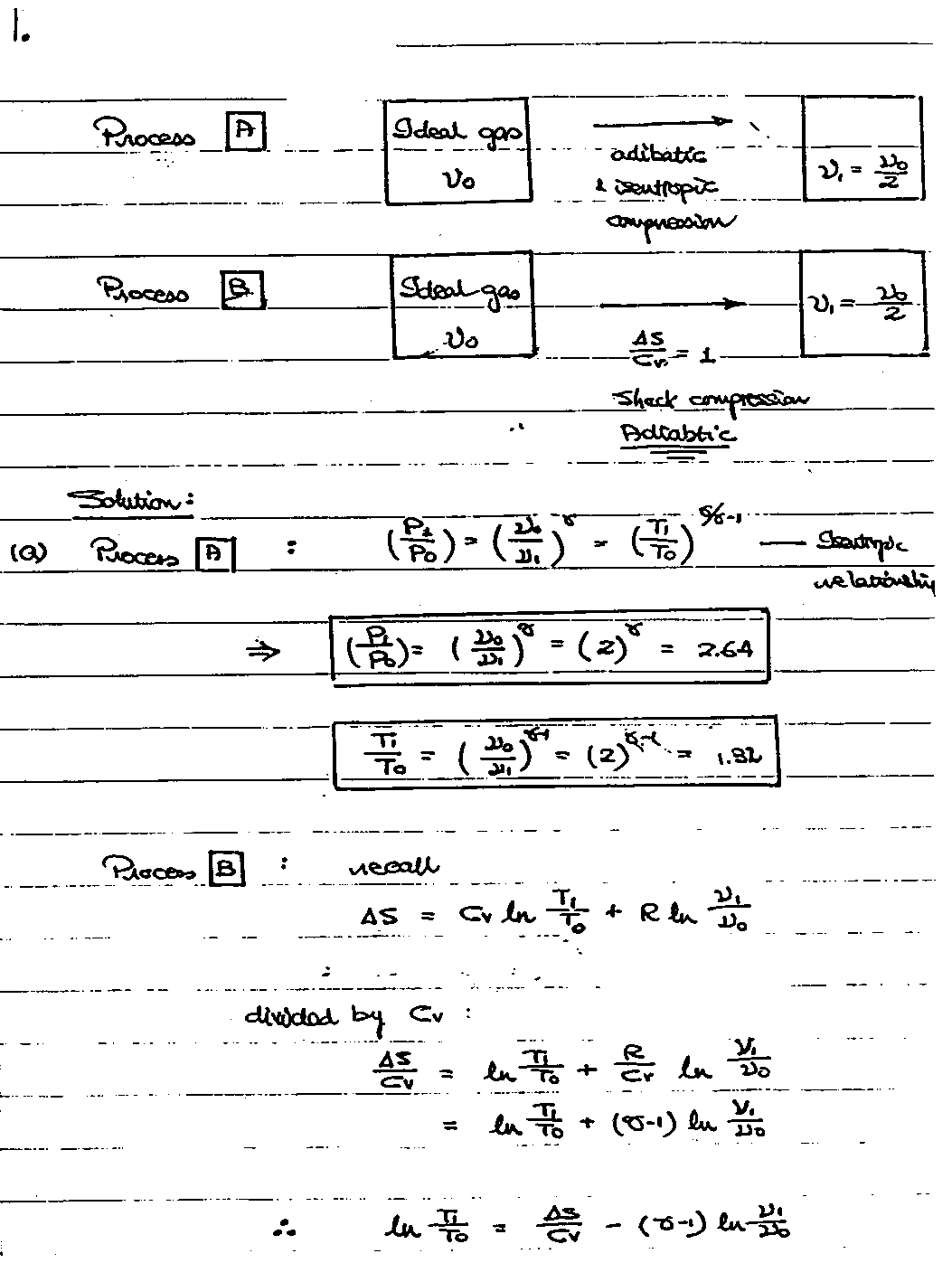
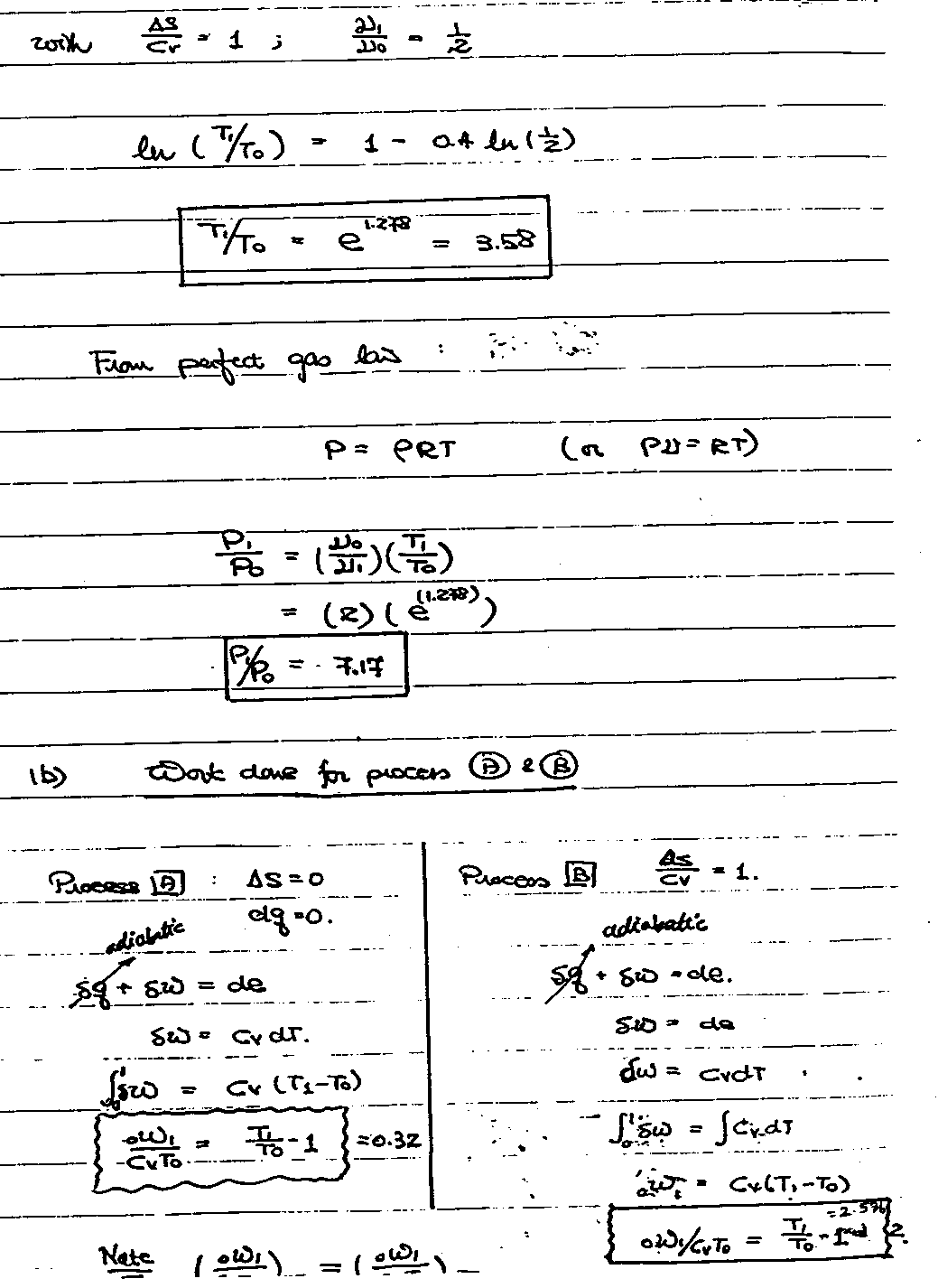
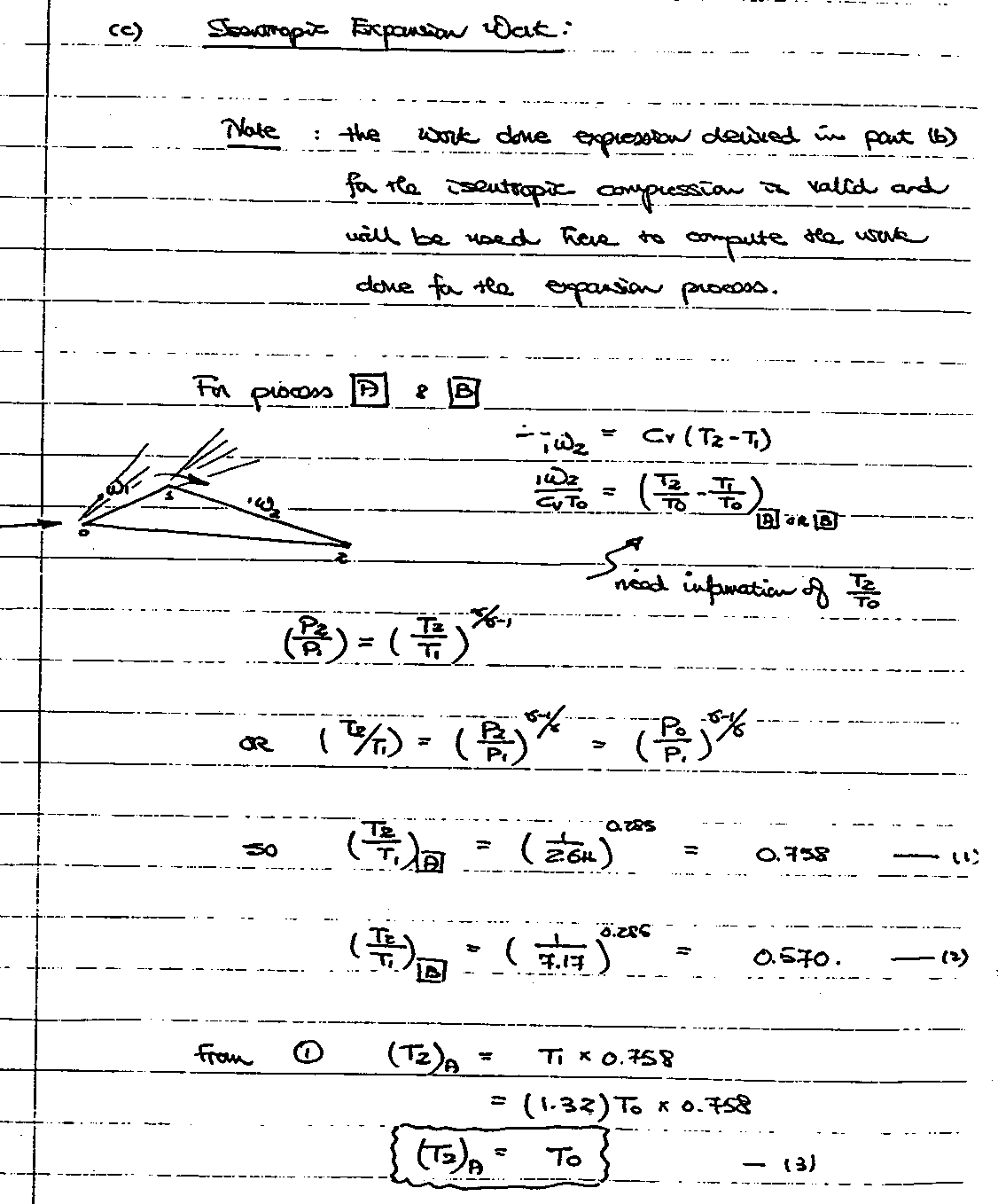
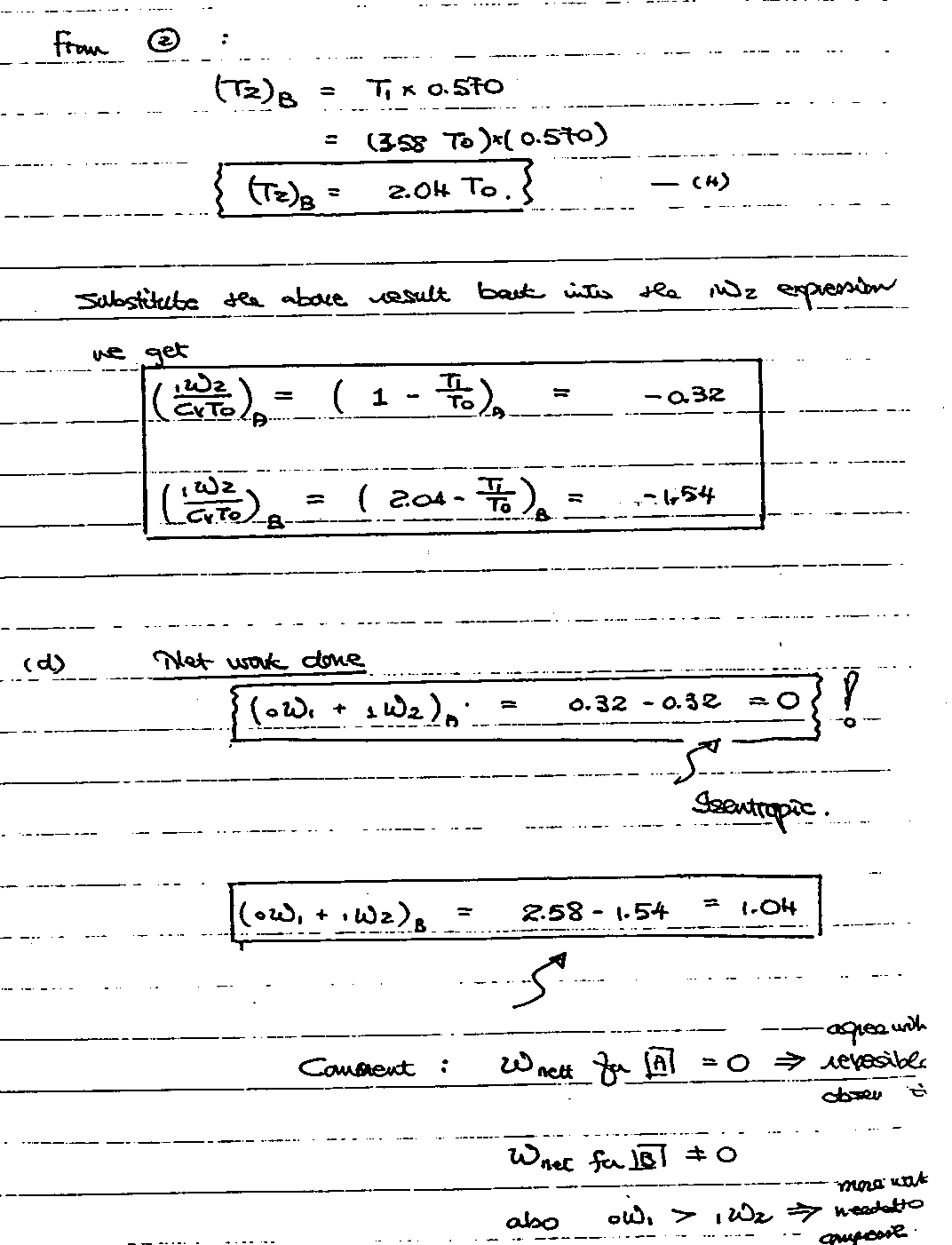
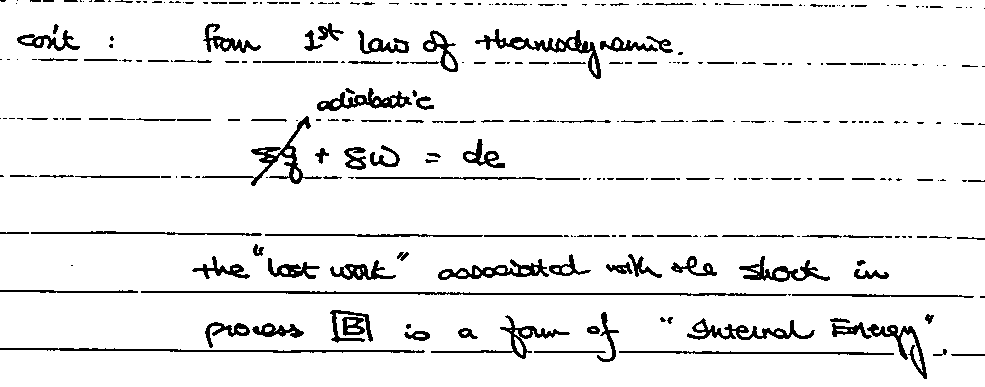
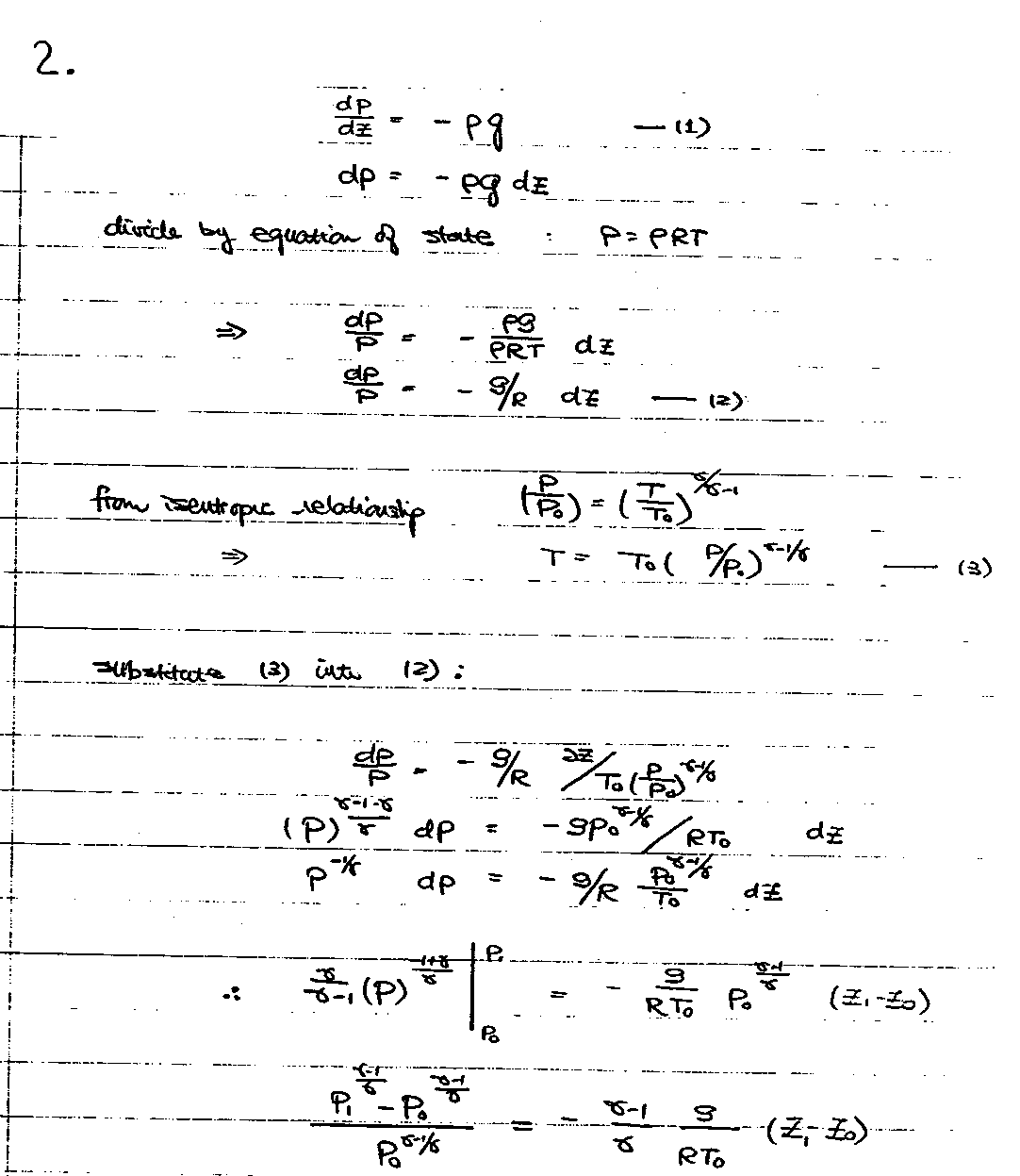
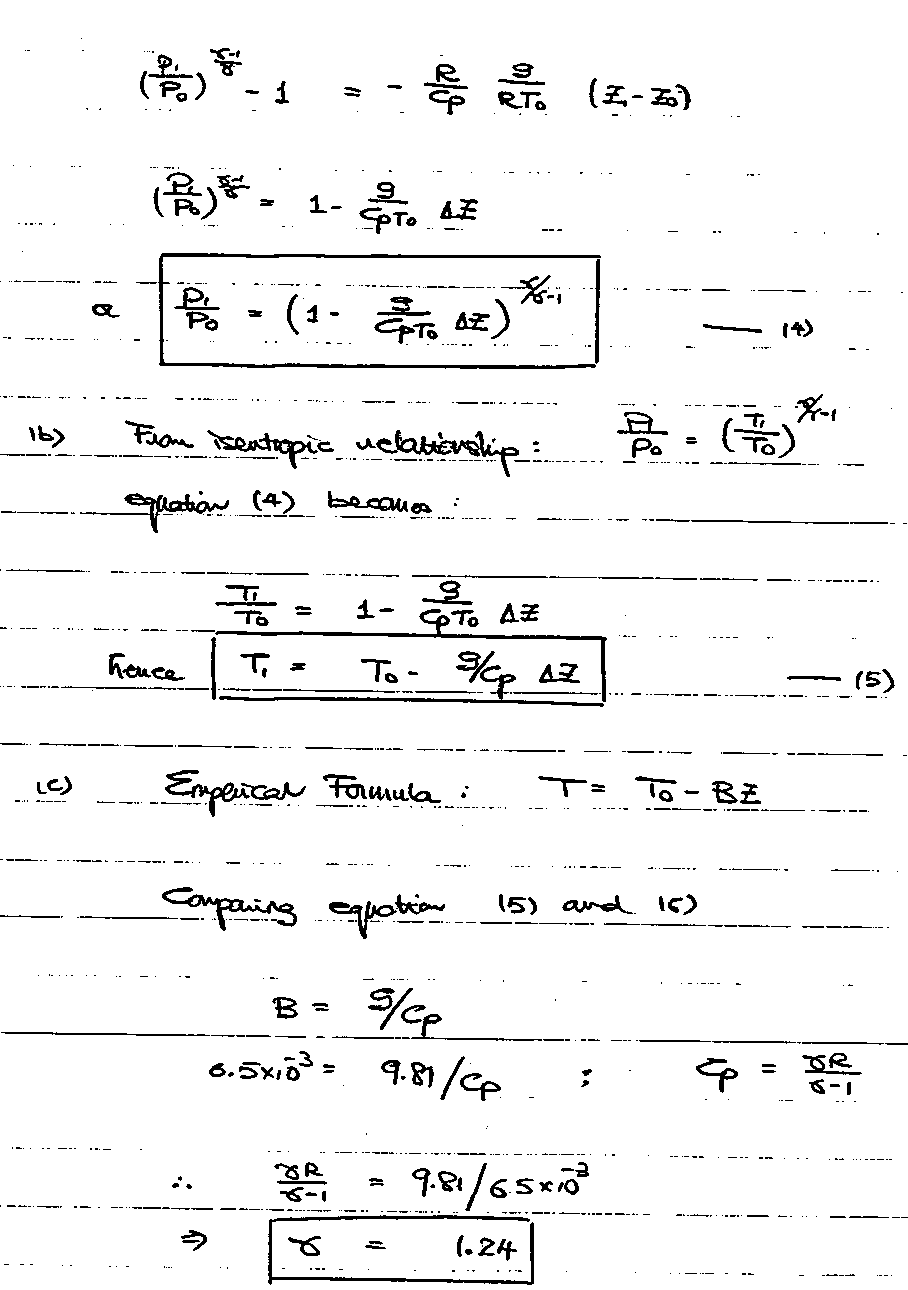
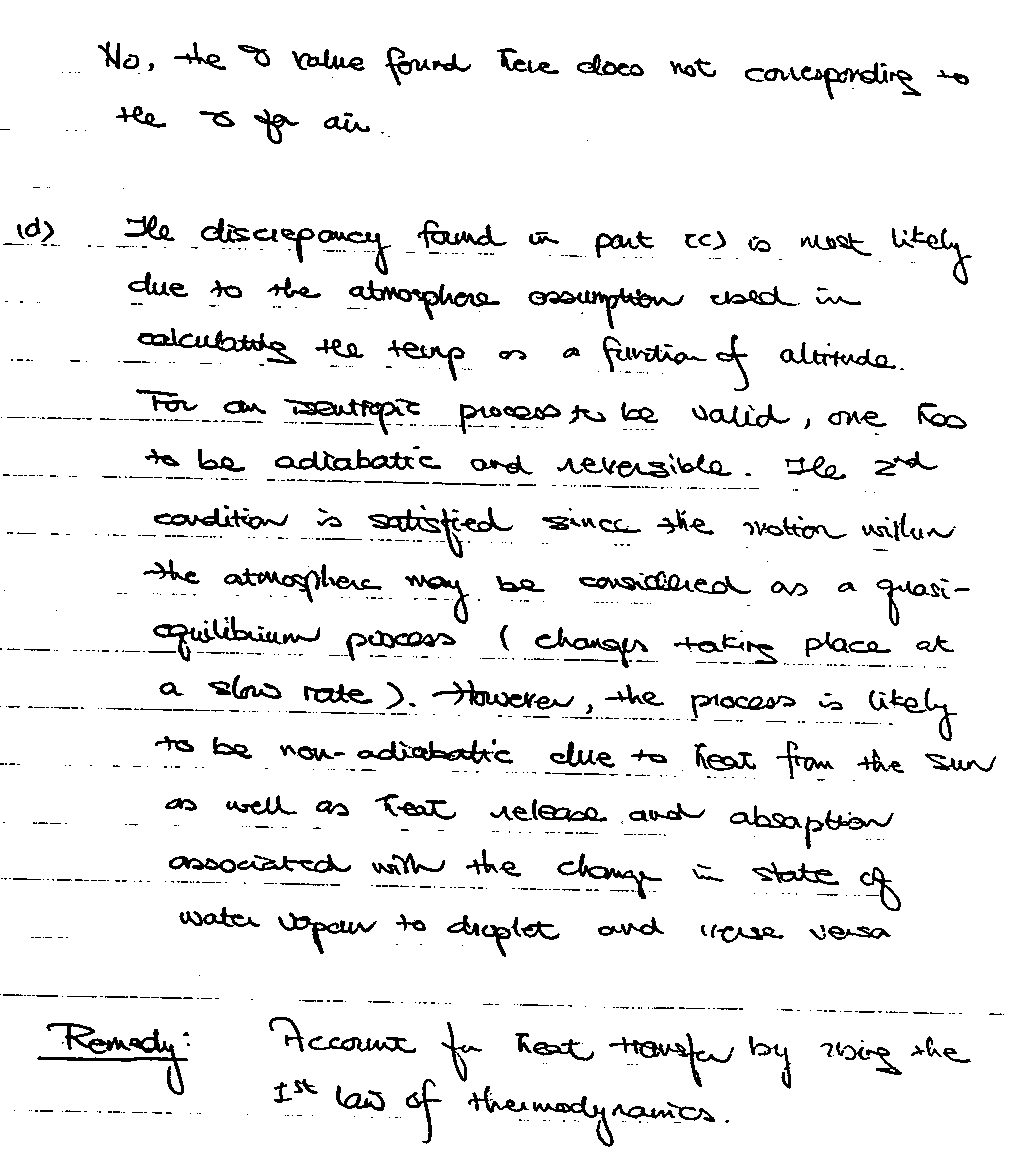
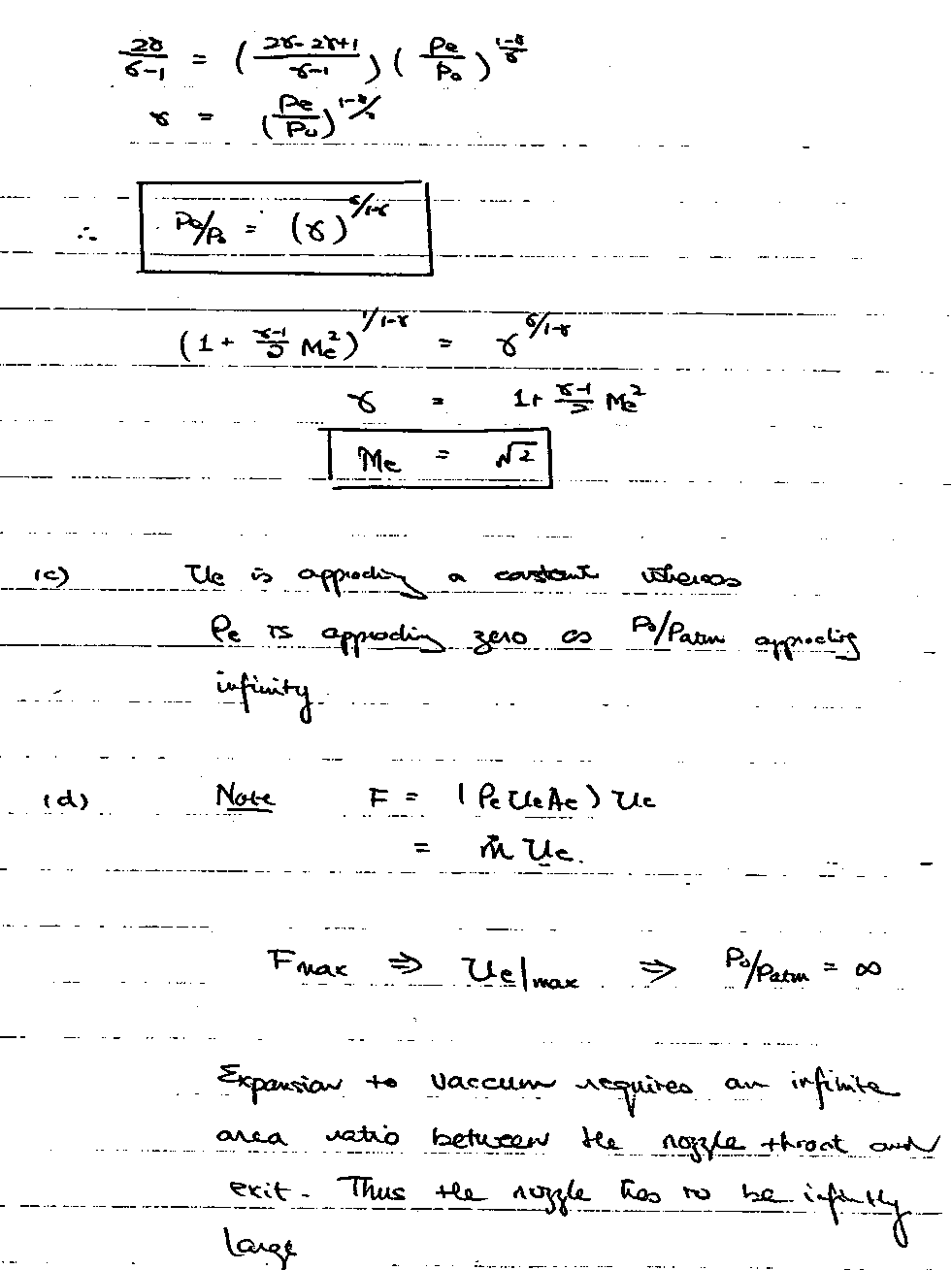
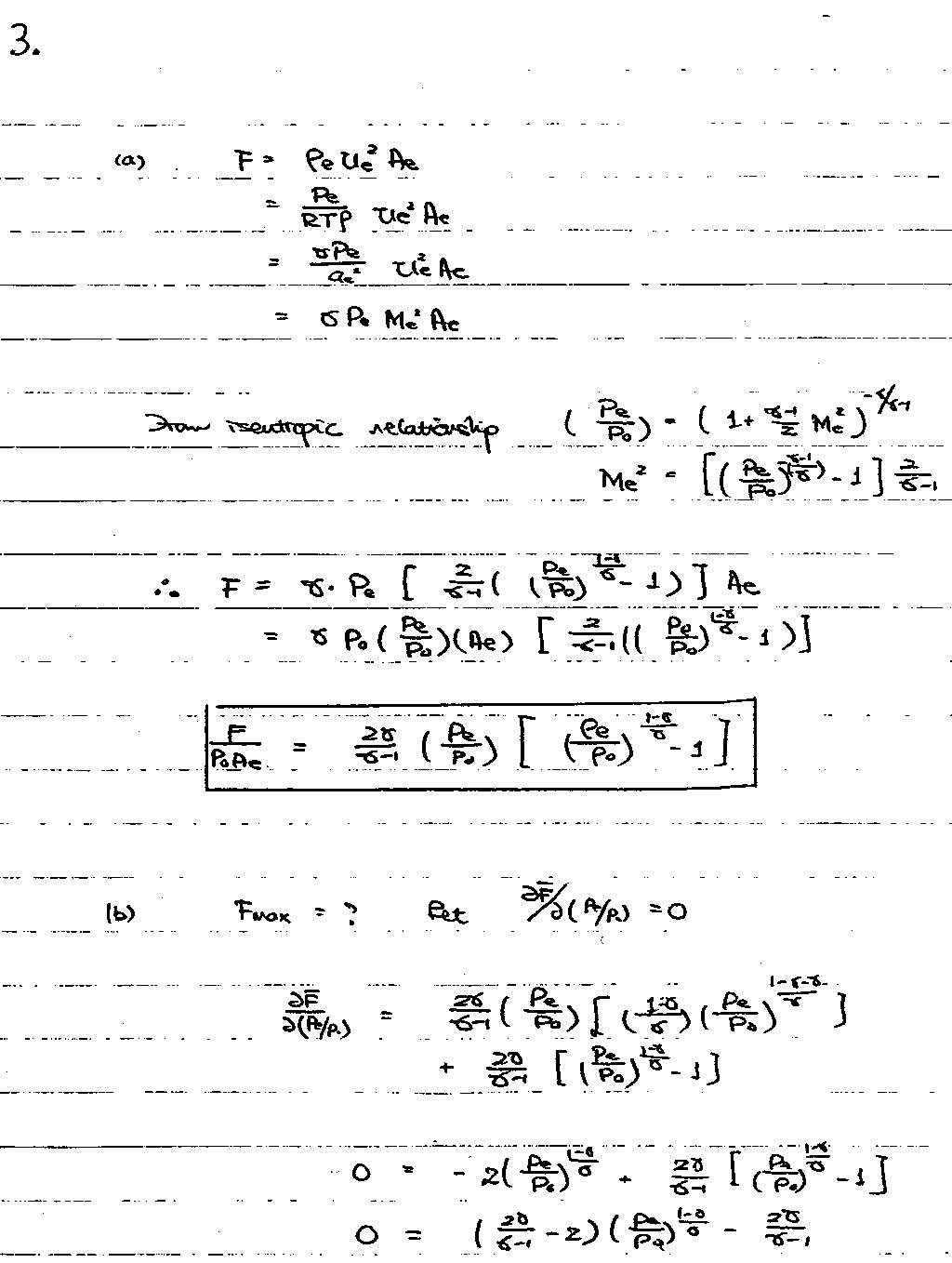
File translated from TEX by TTH, version 2.00.
On 18 Feb 2000, 13:59.












